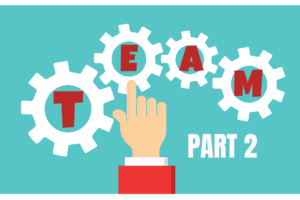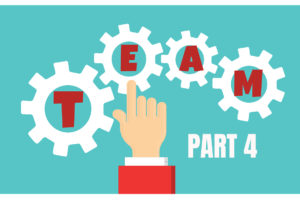Welcome back to Part 3! This week, we are looking at why cooperative learning is one of the most effective approaches to student learning to include in your toolbox. If you are just joining us now, you can go back and read Part 1 and Part 2.
A 21st Century Skill
Most, if not all, educators would agree that collaboration is an important skill for any student to master. Whether you look at the framework developed by P21Partnership for 21st Century Learning or a Social Emotional Learning framework, such as the one developed by CASEL, you will find collaboration as one of the critical skills for students master so they can be successful in education and in the work force.
Since we are tasked with preparing our students not only for the next grade level, but also for the work force and life in general, teaching students to collaborate needs to be toward the top of our list when we are planning lessons.
Creating lesson plans that include opportunities to collaborate does not have to be difficult, nor does it have to take up a ton more time. Let’s first look at some of the benefits of cooperative leaning done well.
Benefits of Using Cooperative Learning
When you consistently and effectively use cooperative learning in your classroom, you create fantastic opportunities for students.
1. Students have the opportunity to practice collaboration regularly.
Since practice makes permanent, it is important that we teach and guide students in the way of strong collaboration skills. Leaving it to the students to “work together and figure it out” is not a good idea. They may “practice” collaboration incorrectly to the point of permanence. It is much more difficult to unlearn a bad habit than it is to learn it correctly the first time.
2. Students learn many additional skills while learning to work cooperatively.
In order to collaborate or cooperate effectively, students learn to share their ideas as well as listen to others’ ideas. They learn how to complete their own part of the task in the context of the larger picture of the common team goal. Brainstorming, planning, and flexibility are often overlooked, but an important part of collaboration. And so is learning how to share resources.
3. Students get excited about learning.
Students get excited about learning, because teachers are excited about teaching. Using structures, such as those developed by Spencer Kagan, make implementing cooperative learning both manageable and enjoyable for everyone involved—both teachers and students. Which teacher doesn’t want a classroom full of students excited about learning?! Students who are excited to learn will learn more.
Kagan’s Basic Principles of Cooperative Learning
But before our students can benefit from cooperative learning, it is important to understand what makes cooperative learning so effective. Kagan names 4 basic principles essential to doing cooperative learning well: Positive Interdependence, Individual Accountability, Equal Participation, and Simultaneous Interaction.
Without these 4 essential, basic principles, what you intend to be cooperative learning can slide into “group work” very quickly. “Group work” does not have the same benefits of cooperative learning.
Next week, we will take a look at these 4 basic principles in the context of a fun way to introduce your students to cooperative learning that works.
When students are excited about learning, what kind of impact does that have on you as their teacher? Leave a comment below.




